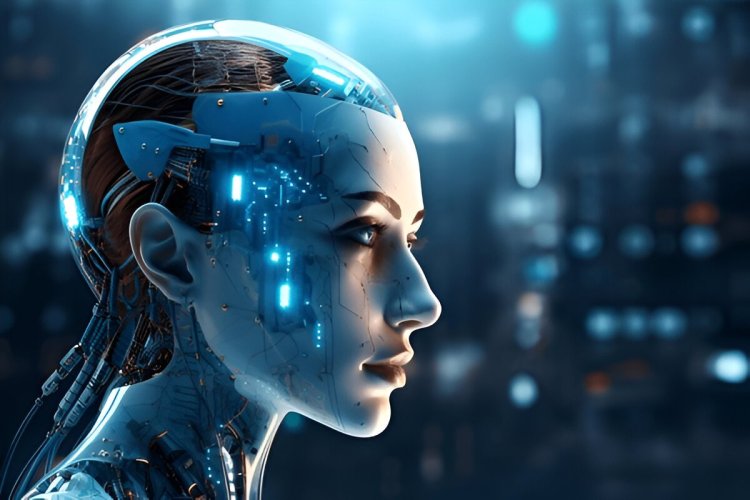How AI Works: A Layman’s Guide to Artificial Intelligence
how AI works in simple terms. Learn how artificial intelligence collects data, learns, makes decisions, and impacts your daily life.

Artificial Intelligence (AI) is no longer a concept reserved for sci-fi movies. It’s around us every day — in smartphones, cars, social media, healthcare, and even online shopping. But many people still wonder: How AI Works?
What is Artificial Intelligence?
Artificial Intelligence refers to machines or software programs that can mimic human intelligence. This includes tasks like learning from experience, understanding language, solving problems, and making decisions. AI is designed to perform tasks that normally require human intelligence, but often faster and more efficiently.
How AI Works – Step by Step
Let’s break down how AI works in simple steps:
1. Data Collection
AI needs a large amount of data to learn. Data can be anything — images, videos, numbers, or text. For example, to train an AI to recognize cats, thousands of cat pictures are collected.
2. Data Processing
Once the data is collected, AI organizes and cleans it. It removes errors, fills missing information, and prepares it for learning. Proper data processing ensures the AI model gets accurate information to learn from.
3. Learning through Machine Learning
This is the brain of AI. Machine Learning (ML) allows AI to learn from data without being directly programmed. There are mainly three types of learning:
-
Supervised Learning: AI is given labeled data (e.g., “This is an apple, that is a banana”) and learns from it.
-
Unsupervised Learning: AI finds patterns in unlabeled data without guidance.
-
Reinforcement Learning: AI learns by trial and error, getting rewards for correct decisions (like training a dog).
4. Pattern Recognition
After learning, AI starts recognizing patterns. For example, an AI trained on thousands of faces will start identifying faces in new images even if it hasn’t seen them before.
5. Decision Making
Using the knowledge gained, AI systems make decisions. A simple example is Google Maps suggesting the fastest route based on traffic data.
6. Feedback and Improvement
AI systems constantly improve. When they make mistakes, they learn from those errors and get better over time, just like humans learn from experience.
Real-Life Examples of How AI Works
Here are some everyday examples where you can see how AI works:
-
Voice Assistants (Alexa, Siri): Understand your voice and perform tasks.
-
Netflix Recommendations: Suggest shows and movies based on your past viewing.
-
Self-driving Cars: Detect objects, pedestrians, and traffic lights using AI vision systems.
-
Medical Diagnosis: AI reads medical images and helps doctors detect diseases early.
Different Types of Artificial Intelligence
AI can be classified into three categories:
-
Narrow AI:
-
AI that is trained for a specific task (e.g., spam filters in email).
-
-
General AI:
-
AI that can perform any intellectual task that a human can. It is still under development.
-
-
Super AI:
-
Hypothetical AI that surpasses human intelligence in all aspects.
-
Advantages of AI
-
Automation: AI automates repetitive and boring tasks.
-
Efficiency: Makes faster and more accurate decisions than humans.
-
24/7 Availability: Unlike humans, AI systems don’t get tired.
-
Data Analysis: Helps in processing massive amounts of information quickly.
Limitations of AI
Despite its brilliance, AI has some drawbacks:
-
Data Dependency: Without good quality data, AI cannot function properly.
-
Lack of Creativity: AI cannot create new ideas like humans.
-
Bias in AI: If AI is trained on biased data, it can produce unfair results.
-
High Costs: Building and maintaining AI systems is expensive.
The Future of AI
The future of AI looks exciting and promising. We can expect:
-
More personalized healthcare
-
Safer autonomous vehicles
-
Smarter virtual assistants
-
Improved education through AI tutors
Conclusion
Understanding how AI works helps us see the amazing potential behind it. AI is not magic; it’s a combination of data, algorithms, and learning. As AI continues to evolve, it will become an even bigger part of our everyday lives. Staying informed about AI empowers you to use it wisely and responsibly.
What's Your Reaction?



















